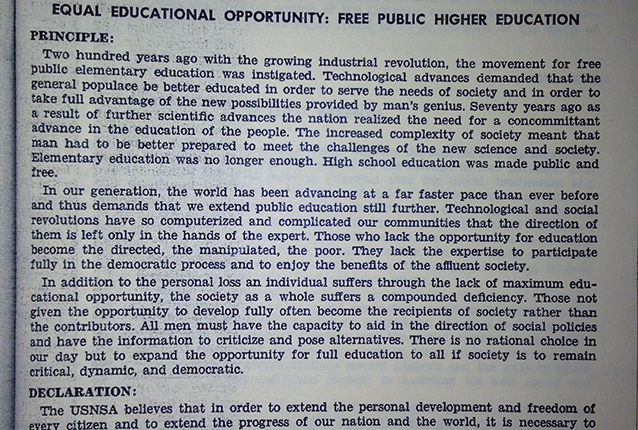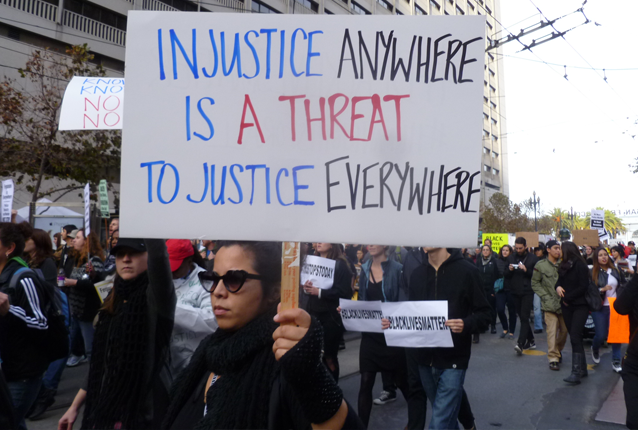The words “free” and “college” haven’t been uttered in the same sentence by a president in decades, until President Obama made a huge announcement last week: he’ll use his State of the Union address to share a plan for making community college free.
The concept isn’t new. Across the country, student groups like the U.S. Student Association (USSA) have been fighting for free higher education for generations. In fact, 50 years ago this summer, the U.S. National Student Association (which eventually became the USSA) ended their policy platform with: “USNSA thus expresses its support for the establishment of free public higher education throughout the United States financed by the local, state and federal governments, with the purpose of furthering the freedom of the individual and the critical spirit which ensures a dynamic and democratic society.”
President Obama’s proposal, which would create a federal-state partnership to ensure that tuition is free at community colleges, legitimizes the decades-long call for free higher education and gives new energy to a movement aimed at eliminating the student debt crisis. Four out of 10 community college students graduate with an average of $14,000 in student loans, and more than 20 percent of these graduates will wind up defaulting on those loans. Reducing the need the borrow to attend community college is a solid first step toward shrinking the ballooning rate of student loan debt and making higher education a reality for thousands who currently can’t afford it.
But the fight for truly free community college is far from over. The devil is in the details of President Obama’s proposal, which would only make tuition expenses at community colleges free. Tuition only makes up about 21 percent of the cost of attendance (or $3,347 in the latest academic year, according to the College Board). Instead, the bulk of the costs facing community college are actually spent on housing ($7,705), books ($1,328) and transportation ($1,735). Still, by removing tuition from the equation, community college students would be able to use other financial aid – like Pell Grants – toward mitigating these other costs. The need to borrow money in order to receive an education certainly won’t be eliminated, but it will be reduced.
For those concerned about the rising cost of college or the impact that the student debt crisis has on the economy, the president’s proposal is an important step forward. The fact that tuition-free community college is back on the agenda means that our voices have been heard, and that there’s a real commitment to restoring a promise of higher education made decades ago. Now, we must continue to call for free education for all – and for additional policies to help existing student debtors struggling to pay off their debt.







